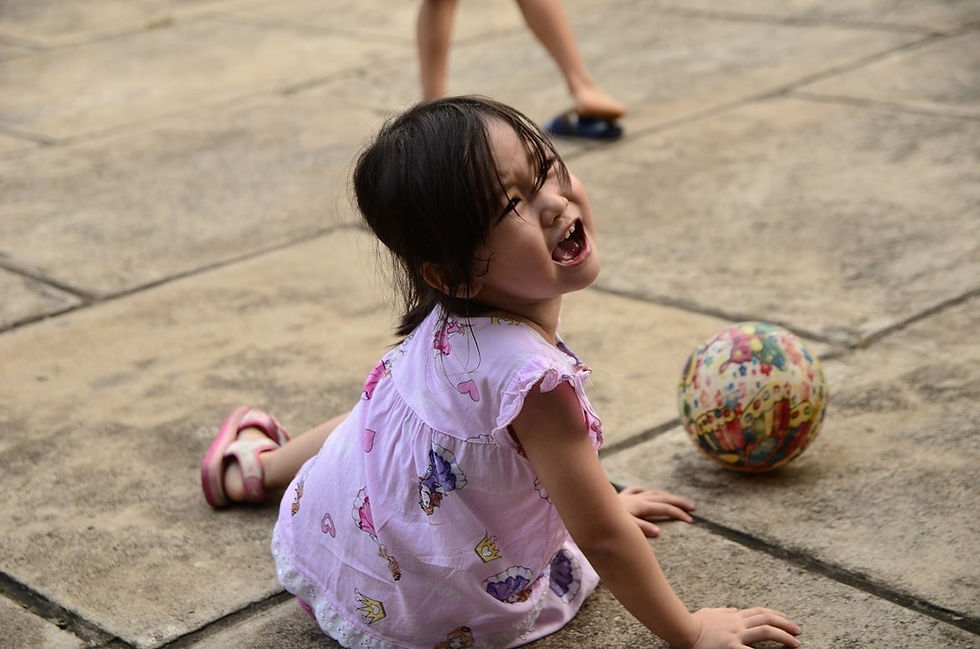How To Build Emotional Intelligence in Anxious Children
- Carissa Menard

- Sep 2
- 4 min read

Helping a child manage anxiety is one of the most delicate and challenging parts of parenting. For anxious children, everyday moments can feel overwhelming, like going to school, trying something new, or even attending a birthday party. While the natural instinct might be to protect them from discomfort, long-term resilience and confidence come from teaching emotional awareness and self-regulation.
Emotional intelligence in children is their ability to recognize, understand, and manage their emotions, and it’s especially important for kids who experience frequent anxiety. By using tools from cognitive behavioral therapy (CBT), managing your own stress, and creating a calm, responsive home environment, you can equip your child with lifelong emotional skills.
What Emotional Intelligence Looks Like in Anxious Kids
Children with high emotional intelligence can recognize when they’re feeling nervous, sad, frustrated, or scared, and they can respond to those emotions in healthy ways. For anxious kids, this often means learning to slow down racing thoughts, identify fear-based thinking, and practice calming behaviors before anxiety spirals into meltdowns or shutdowns.
But these skills don’t develop on their own — they must be taught and modeled.
CBT Strategies To Build Emotional Intelligence
CBT is one of the most effective approaches for supporting anxious children, especially when emotional intelligence is the goal. CBT teaches children that their thoughts, feelings, and behaviors are all connected, and by changing one, they can influence the others.
Here are a few child-friendly CBT techniques you can practice at home.
1. Name the Feeling
Help your child learn the language of emotions. You might say, “You seem nervous right now. Does that sound right?” Or, “It looks like your body is telling you you’re overwhelmed.” Use emotion charts or storybooks to expand your child’s emotional vocabulary.
2. Catch the Thought
Teach kids to recognize the thoughts behind their feelings. For example: “I’ll mess up my lines in the school play” or “Nobody wants to play with me.” Write these down together and talk about whether they’re helpful or accurate.
3. Challenge the Thought
Once your child can identify anxious thinking, help them reframe it. Ask: “What’s another way to think about this?” or “What would you say to a friend who felt that way?”
These simple, repeated exercises form the foundation of CBT for kids, and they build both awareness and confidence.
Creating a Calm, Emotionally Safe Home Environment
Children absorb the emotional tone of their surroundings. If home life feels chaotic, critical, or reactive, even the most well-meaning emotional lessons can fall flat. For children with anxiety, a calm environment acts as a buffer against the stressors they encounter outside.
Here’s how to create a supportive setting.
Practice calm routines. Predictable bedtime, mealtime, and transitions help anxious kids feel secure.
Minimize overstimulation. Loud TVs, cluttered spaces, or multiple simultaneous conversations can overwhelm a sensitive child.
Use a gentle tone. When correcting behavior or discussing emotions, keep your tone low and warm to reduce defensiveness.
Be patient. Growth takes time. Focus on progress, not perfection.
Most importantly, normalize emotions. Let your child know that it’s okay to feel scared, angry, or uncertain and that these feelings come and go, just like clouds passing through the sky.
Managing Your Own Emotions First
When you’re stressed, your child will sense it. As much as you’re focused on parenting anxious children, your own well-being plays a huge role in how effective your support can be. Children rely on co-regulation — the process of borrowing calm from their caregivers — to feel safe enough to calm themselves down.
That’s why developing coping strategies for parents is essential. Try these steps.
Deep breathing or grounding techniques when you feel overwhelmed.
Taking breaks when tension builds during conflict or anxiety episodes.
Seeking support, whether from friends, a therapist, or a parenting group, so you don’t carry the burden alone.
The more emotionally regulated you are, the easier it is for your child to mirror that calm energy.
Everyday Opportunities to Practice Emotional Skills
You don’t need to wait for a crisis to help your child build emotional intelligence. Everyday moments offer powerful learning opportunities.
After a disagreement with a sibling, talk about how everyone felt and what could be done differently next time.
If your child is hesitant about a new activity, explore what emotions are behind their resistance.
Celebrate emotional wins, like expressing nervousness without melting down or trying a new strategy to calm down.
Over time, these efforts compound. Your child starts recognizing emotions more easily, responding with self-awareness, and believing they have the tools to handle tough situations.
Final Thoughts on CBT and Anxiety in Children
Helping anxious children build emotional intelligence isn’t about removing stress or shielding them from difficulty. This process focuses more on giving them the internal compass to navigate life’s ups and downs with insight, confidence, and compassion, for themselves and others.
Through the consistent use of CBT for kids, emotional validation, and parental self-awareness, you can foster the kind of growth that leads to lasting resilience. It may take time, but every small conversation, every emotion named, and every reframed thought is a step toward emotional mastery.
CBT-informed child life services help children identify emotions, develop healthy coping strategies, and manage fear and anxiety related to challenging experiences. Connect with one of our Certified COPE Practitioners here!








Comments